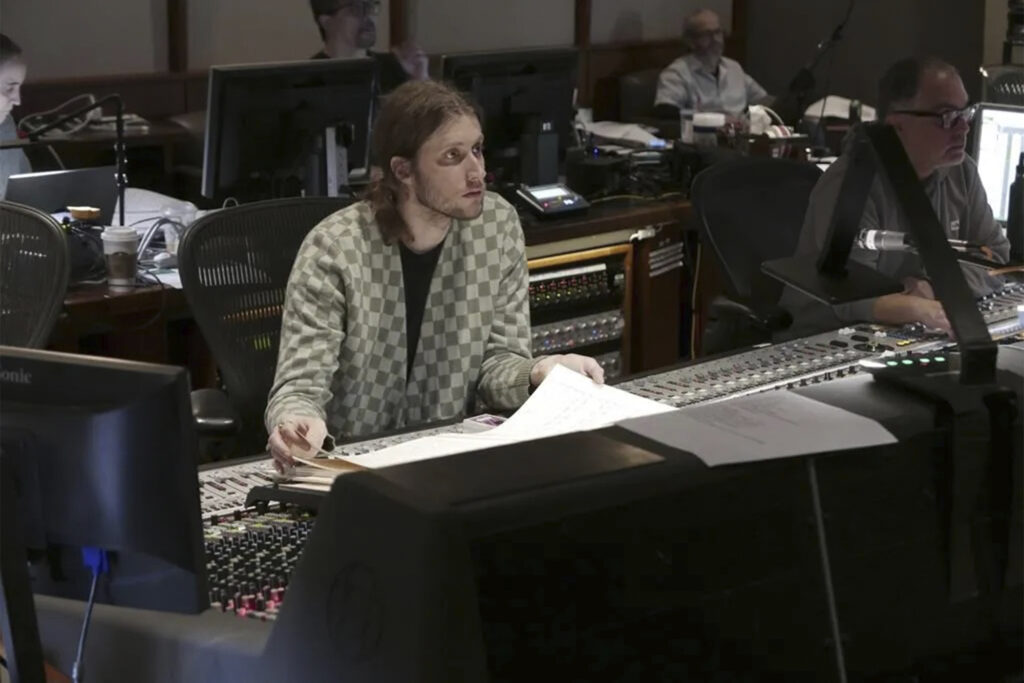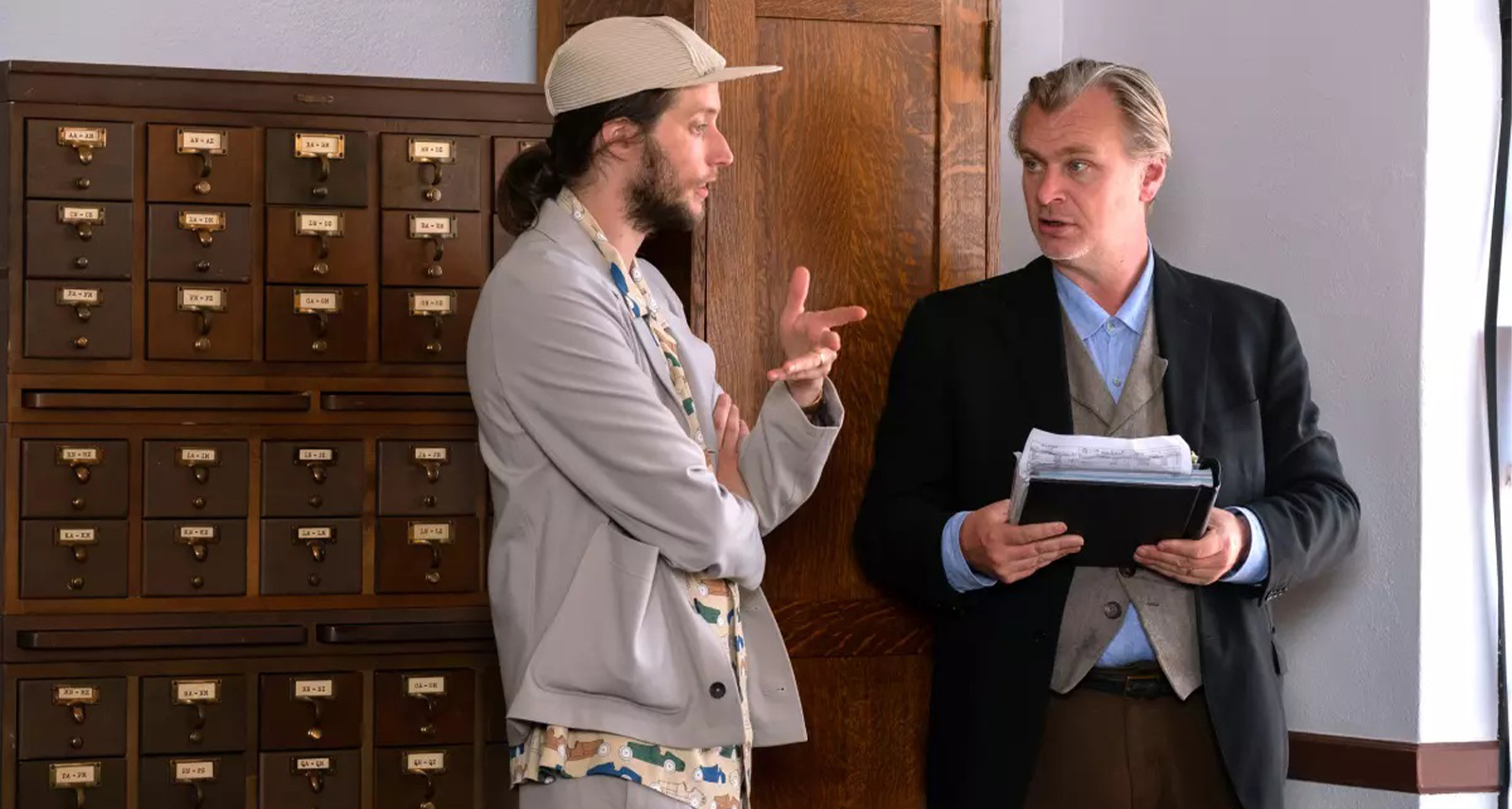‘Oppenheimer’ Composer Ludwig Göransson Says He Turned Emotions Into Music
Ludwig Göransson is one of the most recognizable names in Hollywood when it comes to bringing films to life with his music composition. He has scored every one of Ryan Coogler’s feature films to date: Fruitvale Station, Creed and both Black Panther films – for the latter Black Panther, he won the Academy Award for Best Original Score and the Grammy Award for Best Score Soundtrack for Visual Media. With the second Black Panther film, Göransson earned an Oscar nomination for Best Original Song for “Lift Me Up” performed by Rihanna.
It seems like Göransson might just nab his next Oscar with the phenomenal composition in Christopher Nolan’s magnus opus, Oppenheimer, which gives a bold and nuanced portrayal of a complex, contradictory figure in history. It thrusts audiences into the mind of theoretical physicist J. Robert Oppenheimer (Cillian Murphy), whose landmark work as the director of the Manhattan Project’s Los Alamos Laboratory created the first atomic bomb. Göransson’s musical composition, effortlessly accompanying the visual effects, lives rent free in our minds.

While the Sweden-born composer worked with Nolan on Tenet, this time around he had to dig deeper to score the film’s epic and intense sequences. With a combination of orchestral arrangements and violins, the composer admits he had to emotionally go to some dark places to get into the mind of J. Robert Oppenheimer.
I saw down with Göranssonn in Los Angeles to discuss his work in the film, ahead of the world premiere of “The Story of Our Time: The Making of Oppenheimer,” a 70+ minute immersive piece, that is now available with the home entertainment release of Oppenheimer.
Congratulations! How does it feel given the immense success of Oppenheimer?
Thank you. It feels incredible. It feels so nice to be here. This is a project where you have a lot of people watching it. [I] get a lot of responses from people from back home in Sweden, in Europe, but also here in America, and I see a project that really touches a lot of people.
“That’s what the music needed to do — it needed to get the audience to feel all of his feelings as you see on screen.”
Ludwig Göranssen
When I think of Oppenheimer I can’t help thinking about the immersive music that goes with the intricate and intense scenes. So what was the key for you when it came to capturing the essence of not just Oppenheimer, the person but as well as the film that is Nolan’s film?
It was a big, big task. When I read the script Nolan wrote, [it was] very clear from the from the get go that this story in the movie is about Oppenheimer’s perspective; the audience is meant to feel what he’s feeling, to see what he’s seeing, to be inside of him.
That’s what the music needed to do — it needed to get the audience to feel all of his feelings as you see on screen. That was the most important part of the music. And it was difficult because I had to go there myself, emotionally, to these dark places that he’s going through. That was challenging, but also very rewarding.
You opted to not rely heavily on modern production techniques, and you used the organic orchestra. Can you talk a little bit about that?
Well, I love trying to make sounds that people aren’t familiar with, and there’s so many new ways you can do that. You can manipulate existing sounds, and you can mash them together with something you’re already very familiar with.
For example, the main instrument in this movie is the violin. That was Chris Nolan’s idea. He was interested in having the violin capture Oppenheimer’s eccentric personality. So you can hear the violin throughout the whole film, but you hear it played using so many different techniques, going from romantic, to neurotic, to horrific. Sometimes, also, you have it manipulated with electronics so that you can’t really tell if it’s just a violin or if it’s a synthesizer. So through all of that, the violin and string orchestra, that’s really how we tried to capture Oppenheimer.
“We started with the emotional core of the story instead of thinking about sounds and productions. I started by trying to find the emotional story, the emotional core, and just started with one violin. And trying to find the intimate, emotional core of Oppenheimer.
Ludwig Göranssen
You had a very intense five day production, I believe for the montage scene, where you push the limits of what you could do. Can you talk a bit about that in terms of how that was a professional and creative stepping stone for you?
So when I start working with Christopher Nolan, we start working very early, right after I read the script before shooting the film. So I met up with him once a week and we talked about the script, and I wrote music, and we talked about the music that I wrote. We’re trying to build our own sound world.
One of the first things that Chris showed me was the visuals for Oppenheimer’s inner worlds. When you see molecules and atoms swirling around, you see the fire, these visual effects that Andrew Jackson was working on, together with Chris Nolan. And [when] I saw that I was incredibly inspired, [thinking] how do you make music to push that energy go faster and faster? That’s how the piece ‘Can You Hear the Music?’ came together; we wanted to create a continuous piece of music that felt like it was going faster and faster and faster. Capturing it all in one live performance with a live orchestra, that [was] more challenging than I thought it was going to be. We spent five days with some incredible musicians and we were able to pull that together.
What is something that you’ll always remember that you did on Oppenheimer in terms of your personal accomplishment?
Well, I think for Oppenheimer, it’s the timespan of finishing the project, going through all those emotions, all those feelings. It’s not until now, almost a year later, where I’m kind of starting to think about all this, and work through some of these things — things I had to personally conquer and challenge in my inner emotions — to be able to capture them on screen. I’m happy I’m able to do that now with these questions, and with you. So, thank you.
“I’ve seen Oppenheimer maybe 50 times. Every time I see it, I learn something new. […] So that rediscovery, being able to do that at home and watch scenes over and over again, or [watch] specific moments in that movie, I think you’ll learn a lot.
Ludwig Göranssen
Of course! What was your expectation of working with Nolan, especially the second time around. In what ways did he surprise you?
I had no idea what to expect, actually. I didn’t know what he was working on. He never really talks about what he’s doing and what he’s working on. So, it wasn’t until I was sitting there, reading the script, that I found out what this movie was about.
We started with the emotional core of the story instead of thinking about sounds and productions. I started by trying to find the emotional story, the emotional core, and just started with one violin. And trying to find the intimate, emotional core of Oppenheimer.
I’ve seen the film theatrically three times as well. But now with the home entertainment release, what do you think is the ideal setup for people to get the best experience of watching Oppenheimer at home?
There’s so many good things, but one of my favourite things with Chris Nolan’s films – and I’ve worked on two, but I’ve seen a lot of them – is the attention to detail that’s put into his films. Like you said, you’ve seen it thrice. I think I’ve seen Oppenheimer maybe 50 times. Every time I see it, I learn something new. I heard some new music that I can’t even remember [composing], I see new visuals, and there’s so many layers of details in his films. So that rediscovery, being able to do that at home and watch scenes over and over again, or [watch] specific moments in that movie, I think you’ll learn a lot.
Oppenheimer is now available to own just in time for the holidays on 4K Ultra HD, Blu-ray and Digital from Universal Pictures Home Entertainment.










